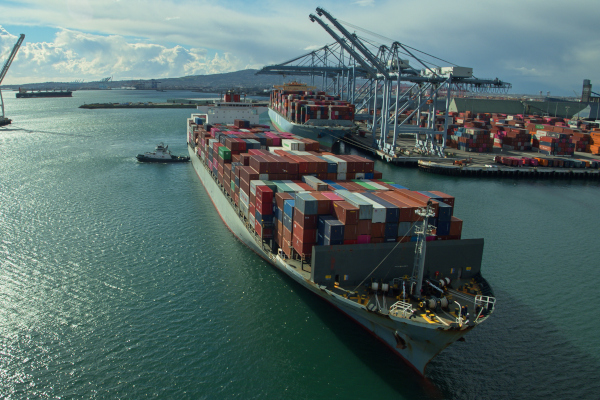Data recently issued by S&P Global Market Intelligence, showed that United States-bound containerized freight imports was steady in June compared to May, while coming in a bit lower on an annual basis.
June imports came in at 2.43 million TEU (Twenty-Foot Equivalent Units), matching May’s tally, and was down 11% compared to June 2022’s 2.74 million TEU.
In an interview, Chris Rogers, head of supply chain research, S&P Global Market Intelligence, pointed to ongoing consumer demand weakness as a driver for the annual decline.
“If you look at the big buckets [of import categories], pretty much everything is down year-over-year, as has been the case for a while,” he said. “Consumer goods imports are down by about 20%. That has been led by furniture, appliances, leisure goods, and apparel, which are all down by about the same amount.”
On the industrial side, he noted that capital goods are only down by about 2%, driven, in part, by items used to build U.S.-based factories, including industrial equipment, power generating and distribution, electrical components, which are all flat or up year-over-year.
“Generally, the industrial side of things is doing better than the consumer side of things,” said Rogers. “The investment we’re seeing in manufacturing capacity, those things take a couple years to actually come online. It might be a precursor of a recovery in a couple of years. Or, if I was feeling bleak, a precursor of excess capacity in a couple of years, if we don’t get a recovery.”
In looking at the first six months of 2023, Rogers said that it is fair to say that the year-to-date import numbers through June are far from impressive, with a 16% annual decline for that period, to 13.76 million TEU (down from16.39 million TEU a year ago, for the same period), while the rate of decline has slowed in recent months.
“It is the ‘slowing down of the slow down,’” he said. “That is something we kind of see across the board. It is worth bearing in mind that the first half of last year was different for two reasons. First, demand was higher, and second, when looking at the first quarter into the second quarter last year, there were still a lot of companies importing really aggressively, because they were worried about shortages. This time last year everyone was talking about early shipping. And as we roll into the back end of this year, your comparison base is changing, because you are, because you are comparing to a period where demand had already come down and also a period when early shipping had already happened.”
What’s more, he observed that, as the year goes on, annual comparisons are expected to get easier, with expectations for the third and fourth quarters to be more stable, with potential for a recovery year overall, depending on the final figures, while still being down compared to 2022.
SC
MR


Latest Supply Chain News
- Made in Mexico, manufactured by China
- Retail sales see gains in October, reports Commerce and NRF
- Balancing green and speed: Home delivery insights from the pandemic era
- AdventHealth named top healthcare supply chain by Gartner
- Geopolitical readiness in supply chains: Strategic challenges for leaders
- More News
Latest Podcast

 Explore
Explore
Business Management News
- Made in Mexico, manufactured by China
- Retail sales see gains in October, reports Commerce and NRF
- Balancing green and speed: Home delivery insights from the pandemic era
- AdventHealth named top healthcare supply chain by Gartner
- Unlocking retention: The role employee engagement plays
- Can supply chain managers embrace an entrepreneurial mindset?
- More Business Management
Latest Business Management Resources

Subscribe

Supply Chain Management Review delivers the best industry content.

Editors’ Picks




